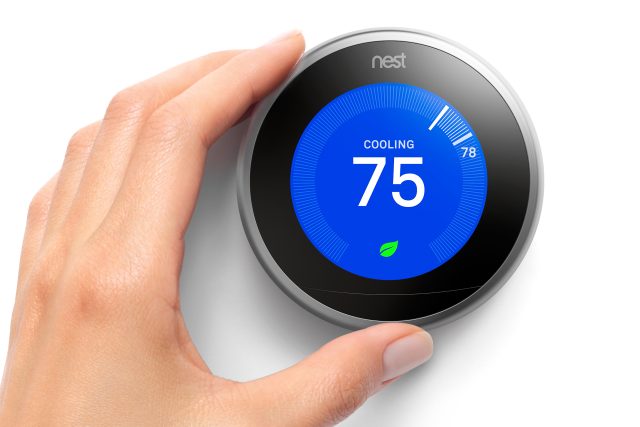New Google Nest Thermostat hits the FCC, possibly with air gesture controls

The 3rd-gen Nest Thermostat from 2015. (credit: Nest)
A new Google Nest thermostat has hit the FCC. Droid-Life was the first to spot this listing on the government's site. The listing is in confidential mode, so it's sparse on details, but the details we do have are kind of weird. We think it has air gesture controls.
First, the RF exposure report lists the device as a "thermostat" and says it has 802.11n Wi-Fi and Bluetooth, which all seems pretty normal. Then, it lists the device with a "60GHz Transmitter," which has not been on a previous Nest Thermostat. One possible use for a 60GHz transmitter is "WiGig," a 60GHz form of Wi-Fi that can hit 7Gbps. High-speed data transfers don't really seem appropriate for a thermostat, though, so the other more likely possibility is Project Soli, Google's air gesture system that was first commercialized late last year on the Pixel 4.
Project Soli is an air gesture system that Google has been developing for some time. It's a compact radar system-on-a-chip, and Google has FCC approval to use Soli in the 57- to 64-GHz frequency band. The original sales pitch for Soli was that, by blasting your hand with 60Ghz and capturing the returning signal, Soli could detect "sub-millimeter motions of your fingers," which would enable very fine gesture control. It was possible to pinch your thumb and forefinger together for a button press or rub the two fingers together to spin a dial. Soli was originally envisioned for devices without large touchscreens, like speakers or smartwatches. A Nest thermostat would likely fit into that description, since it doesn't have a touchscreen and instead relies on a spin-able scroll wheel that doubles as the outside body of the thermostat.
Read 3 remaining paragraphs | Comments